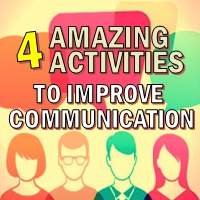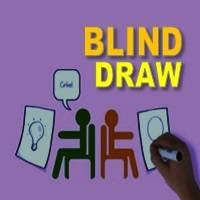
4 Amazing Activities to Improve Communication
We propose 4 amazing activities to improve communication and help improve productivity and mitigate conflicts before they arise. It also allows you to maximize the talents people and ensure they are in the roles they are best suited for.
Team building activities are a fun and educational way for you to improve your team members’ communication with each other.
Tries to Explain without Speaking

Explain without speaking is a great activity both for small and large groups and underlines the importance of good communication. Divide participants into groups of 4 or more people. There can be up to 10 people per group.
For smaller groups, it’s best to have everyone play together.
To begin, the groups are set in a queue, each person with their back to the person behind them so that no one is face to face. One player will lead this activity and won’t participate.
The leader comes up with a phrase, it can be work-related, or something fun! The leader then whispers this phrase to the first person in the queue of each group, and with this, the game start.
When the leader says ‘Go’, the first person in each queue taps the next person on the shoulder, and when they turn around, he/she tries to explain, without speaking, the phrase that the leader gave them.
After 30 seconds, the leader shouts “Change!” and the second person turns around, taps the next person on the shoulder, and the activity repeats as they try to explain whatever they understood from the first person. Be sure that players are not speaking throughout the entire activity.
The game continues until the last person in each queue has participated. Each player has 30 seconds to try to understand the expression and 30 seconds to pass on the information.
Once the game is complete, the last person verbalizes in front of the whole group what they think the phrase is. The results are usually very funny!
Bridge Build Activity

Using the materials provided, two teams must work together to build a bridge, with each sub-team constructing half the bridge each. Bridge build is an excellent activity for developing communication skills, problem solving, and creative thinking.
During the challenge, teams cannot see each other and must rely on their communication skills to build an identical design. You can use anything for building the bridges.
Some suggestions for materials: newspapers, Lego, toy bricks, straws, paper, cardboard, etc. Other essential resources: tape, paper, pens, tape measure, and canvas or sheet.
Required group size 8 to 16, enough people for at least two sub-teams of four or more.
This is an excellent exercise to use as a lead in to a project workshop or team meeting. It gets teams communicating effectively and listening to each other.
Another skill that can be developed during the task is leadership. You can let this happen naturally within a team or you pick a team leader before the start of the challenge.
Instructions
- Before to the start of the activity, setup the room or area with a divide so teams cannot see what the other team is doing.
- Explain to the group, that they will be split into two sub-teams and must work together to create a complete bridge with each team building half a bridge each.
- They will be separated during the challenge and will only be able to communicate verbally to ensure that each build meets the design specifications.
- Give the team ten minutes to brainstorm and come up with a plan for the design. Then each team has 30 minutes to build their half of the design.
- Once the time is up, remove the division that separates the two teams and see how close each construction was to each other.
Blind Draw Activity

In blind draw activity, the team has to instruct their “artist” to draw an item. They have to describe their chosen item without revealing what it is and they are not able to see what the “artist” is drawing.
Each team appoints a member to be the “artist” and the “artist” is then separated from the rest of the group. The remaining members select an item from those provided by the facilitator and will instruct the “artist” to draw it without saying what the item is.
There is a time limit of 3 minutes for the drawing to be completed. Each flipchart is positioned to face away from the group so that they cannot see what the “artist” is drawing.
Get each team to appoint their “artist” who is then separated from the group. Each team selects an item from those provided.
At the end of the activity, all the images are revealed. The team whose drawing is closest to the actual item they chose wins the game.
This activity is great for promoting communication skills. While it seems like an easy task, the team’s one-way communication with their “artist” must be accurate.
It may be useful to run this activity in two rounds; after the first round, the team will realize how important it is to be detailed in their instructions.
Challenge the teams to do better in the second round!
Writing a Book Together

Writing a Book is a game that encourages creativity, collaboration, and memory. It also gives you something concrete to look at in the future to see where your team has been and how far it has come.
This team-building exercise is not done all at once, but over time. Make a large, blank journal or scrapbook available in the break room or other common areas.
Leave pens, markers, tape, and other items that your team can use to write and draw on the book. Encourage them to write quotes from what they are reading or from team members, to write about a fun event that happened at work, temporary tape or glue, or anything that helps record the culture of the team.
The book can have instructions on each page, ask questions, or suggest things to write or draw. Or you can have the guidelines printed and displayed alongside the book (i.e. no swearing, nothing offensive, no complaints, no scribbling in others’ work, etc.).
When the book is full, put it on the shelf and get a new one. The purpose of this team exercise is to create a living story about your group.
With the 4 amazing activities to improve communication you will be able to work: non-verbal communication, interactions, integration, creativity, collaboration, cooperation, make agreements, leadership, teamwork, brainstorming, imagination


